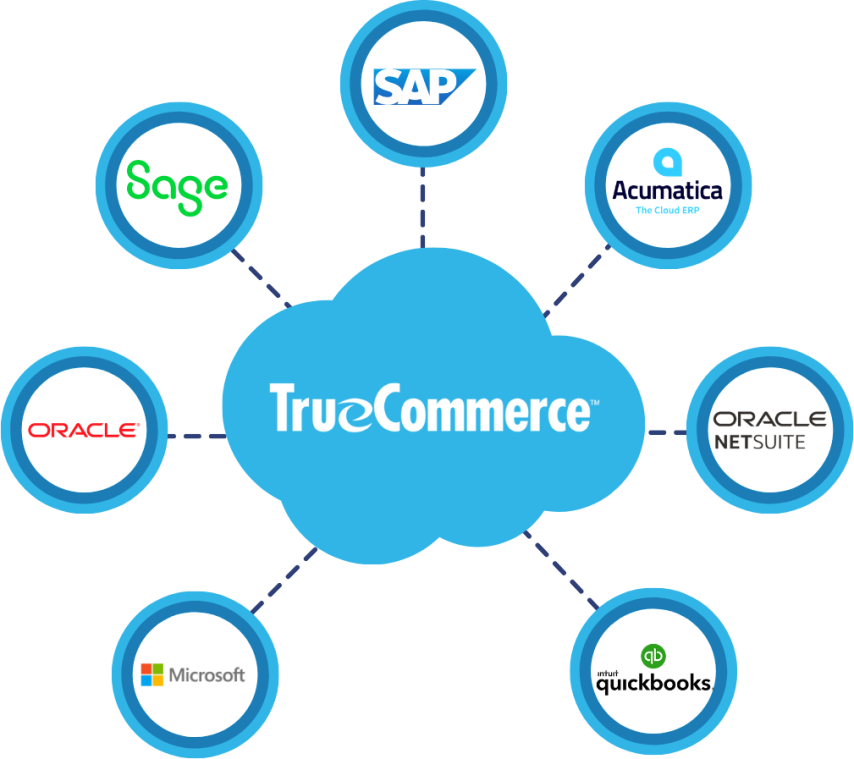How to Become EDI Capable — The Complete Guide

Trading partners need to communicate efficiently more than ever in today’s interconnected market. Manufacturers, retailers, suppliers, distributors, and other businesses along the supply chain must have efficient ways to share data and documents.
Electronic Data Interchange (EDI) is a staple of communication in supply chain management. This technology allows companies to exchange documents electronically in a format their trading partners can process. Becoming EDI capable can open new business opportunities with other partners, suppliers, and vendors. This guide explains the benefits and process of becoming EDI capable.
What Does EDI Capable Mean?
When a company is EDI capable and compliant, it has gained the ability to transmit business documents between trading partners using an EDI system. An EDI solution uses standardized data formats called transaction codes to share data between business partners electronically rather than manually, eliminating the need for traditional communication methods like email, PDFs, or faxes. The EDI system sends documents like invoices and purchase orders between trading partners, usually in batches. This communication method streamlines data in real-time and allows businesses to expand their partnerships.
Becoming EDI capable and compliant is a process of automation, integration, and standardization. EDI capability requires that businesses set up an infrastructure for sending and receiving EDI messages with their trading partners. For EDI capability to work throughout a supply chain, companies must configure a new EDI connection for each partner in their network.
EDI capability is a critical supply chain tool for business growth in the modern market. Examples of EDI-capable trading partners include retail giants like Walmart, Home Depot, and thousands more. These businesses often require their trading partners to be EDI capable to ensure ease of communication about purchase orders and invoices. When companies utilize EDI, they can drive business growth and conduct trade in multiple directions.
What Do You Need to Become EDI Capable?
EDI requires specific technology to function efficiently. EDI documents can either be sent via an indirect connection over a Value Added Network (VAN) or a direct connection with trading partners through on-premises or cloud EDI solutions.
Companies wishing to be EDI capable and use a direct connection must do one of the following:
- Build an in-house EDI system
- Purchase an on-premises EDI solution using a data center
- Utilize a third-party EDI cloud service
How to Become EDI Capable
Deciding how to incorporate an EDI solution into your business communications is a significant task. Here are the steps for how to become EDI capable:
Benefits of Becoming EDI Capable
Simple EDI capabilities can be a significant asset to businesses of any industry, whether in manufacturing, distribution, retail, or another operation along the supply chain. Using EDI can help small to mid-size companies expand, develop trading partnerships, streamline operations, and reduce costs.
Consider a few of the benefits of becoming EDI capable:
The Main Challenges to Becoming EDI Capable
An EDI system provides valuable long-term benefits and is vital for success in managing a supply chain. However, implementing an EDI solution is no small undertaking. Reaching successful EDI implementation requires time and skill in integrating the solution with other business processes.
Consider a few of the main challenges of becoming EDI capable:
How TrueCommerce Can Help
EDI capability is a non-negotiable for businesses looking to grow their supply chain partners and streamline communication processes. An EDI system enables businesses to transmit large amounts of data to their trading partners without the difficulties of manual communication processes. EDI can also reduce document errors and overhead costs while improving security and compliance so companies can complete their order processes more efficiently.
Whatever your company’s needs and where you are in the process of becoming EDI capable, TrueCommerce can help. TrueCommerce provides a cloud-based EDI platform that securely transmits documents through the web to enable companies to do business in any direction. Whether you are a retailer, third-party logistics provider, or supplier, TrueCommerce can help accelerate workflows and maintain your business’ agility.
Consider the benefits of choosing the TrueCommerce EDI solution:
- Scalability: With the TrueCommerce EDI platform, businesses efficiently work through challenges like scaling their system and managing new trading partners. Seamless integration with the top ERP and business systems allows companies to streamline data transmission with virtually any business partner. EDI allows companies to efficiently manage an increasing data flow and reduce manual effort in the data transmission process.
- Outsourced EDI management: Small to mid-size businesses can benefit from outsourcing EDI management to the TrueCommerce EDI platform. Companies with no internal IT team or one large enough to handle EDI management can use TrueCommerce’s EDI architecture to gain adaptability and free up resources. With TrueCommerce, you also get access to our award-winning customer support team.
- Increased visibility: TrueCommerce’s advanced EDI analytics help your company achieve EDI compliance with your partners’ and customers’ requirements. Companies can use increased visibility into their data quality to improve performance and enhance trading partnerships.

Become EDI Capable with TrueCommerce
Despite the potential challenges of implementing EDI capability, the system can significantly increase a company’s access to data sharing and pave the way for growth in a competitive market. If your company is considering how to become EDI capable, TrueCommerce has the EDI architecture and experience to manage your needs. The TrueCommerce platform removes barriers and simplifies communication to help you do business in every direction.
